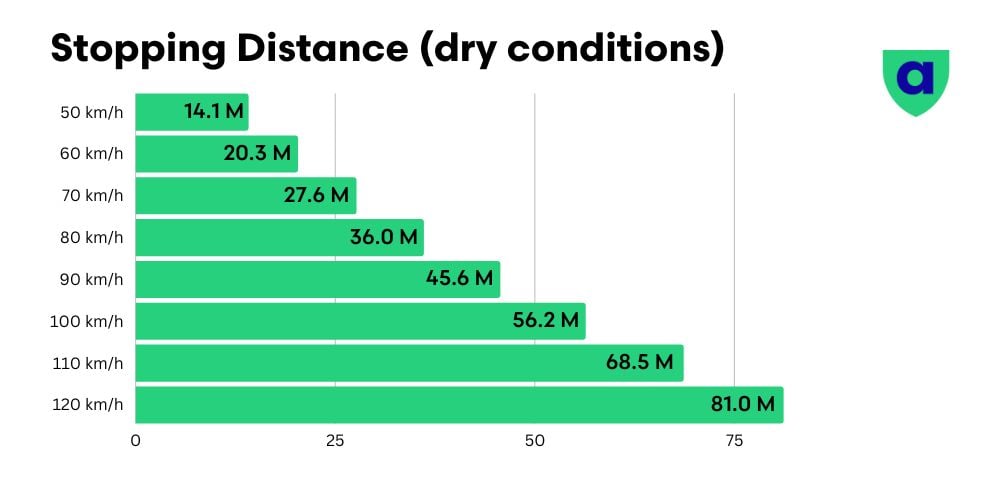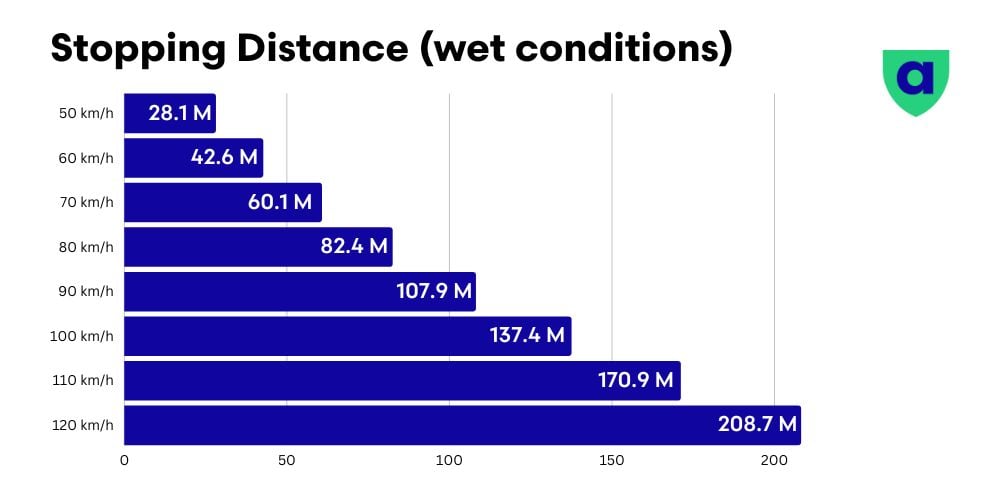Defensive driving is a set of driving skills, techniques, and behaviors that prioritize safety and proactive decision-making to reduce the risk of accidents, injuries, and conflicts on the road. It involves being vigilant, aware of one's surroundings, and prepared to respond effectively to potential hazards and unexpected situations. By mastering these techniques, you'll not only enhance your own safety but also make our roads a safer place for everyone.
What are the 7 Defensive Driving Techniques?
- Maintain a Safe Following Distance
- Anticipate Potential Hazards
- Adjust Speed for Conditions
- Use Proper Lane Positioning
- Minimize Distractions
- Yield the Right of Way and Be Courteous
- Plan Ahead and Avoid Fatigue
1. Maintain a Safe Following Distance
Always keep a safe distance between your vehicle and the one ahead of you using the “two-second rule” as a baseline for how far back you should be. Extend this gap in bad weather or at higher speeds. This buffer provides time to react to sudden stops and helps prevent collisions.
2. Anticipate Potential Hazards
Continuously scan the road, check your mirrors, and watch for signs of trouble ahead. By predicting potential issues and changes in traffic, you'll have more time to respond and avoid accidents.
Imagine you're driving through a residential area. As you approach an intersection, you notice a child playing near the sidewalk. Anticipating that the child might suddenly dart into the road, you reduce your speed and cover the brake. This proactive action allows you to react quickly if/when the child unexpectedly runs into the street. By staying alert and anticipating potential risks, you prevent a potential accident and ensure the safety of pedestrians, cyclists, and other vehicles.
3. Adjust Speed for Conditions
Adhere to speed limits and decrease your speed in adverse weather or congested areas. Slowing down provides better control, reduces the risk of skidding, and allows for safer reactions to unexpected events.
The below graphics indicate the difference in stopping distance based on your speed and the road conditions.


4. Use Proper Lane Positioning
Position your vehicle centrally in your lane for optimal visibility. Avoid staying in other drivers' blind spots, especially semi trucks. Get into the correct lane for your intended direction, this will minimize the need for sudden lane changes.
5. Minimize Distractions
Focus solely on driving and avoid distractions like texting, calling, or adjusting devices while behind the wheel. Use hands-free options for calls, GPS, and other controls, or initiate them before you even start start driving. Having distractions in the vehicle can increase your response time and could be the difference between stopping in time, and rear ending the car in front of you.

6. Yield the Right of Way and Be Courteous
Prioritize yielding to pedestrians, cyclists, and even other vehicles on the road. Communicate your intentions with early turn signals. Show courtesy to other drivers to maintain a smooth traffic flow. If someone is trying to merge into your lane, leave them ample room to get into the lane with proper distancing. A little courtesy can go a long way on the road.
7. Plan Ahead and Avoid Fatigue
Plan your route, anticipate traffic, and be prepared for potential delays. Having your route planned in advance can help you avoid frustration or future issues. Take breaks during long trips to stay alert and prevent driver fatigue, which can impair your reaction time and decision-making abilities.

Conclusion
Did you know that using these strategies and techniques could save you up to 25% on your car insurance premiums? Well, you could! Intact Insurance has a program called my Drive that offers you discounts based on your safe driving habits. If you're an Intact client and you're not signed up for my Drive, talk to your agent or broker, they can help you get setup to start saving.
If you're a defensive driver looking to save some money on your insurance, we'd be happy to help! Give us a call today to get started.







